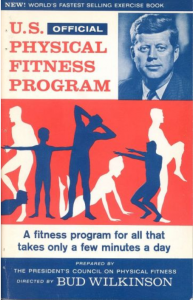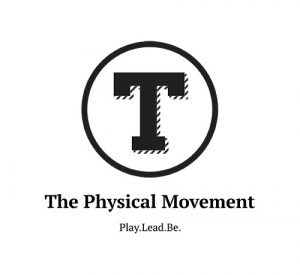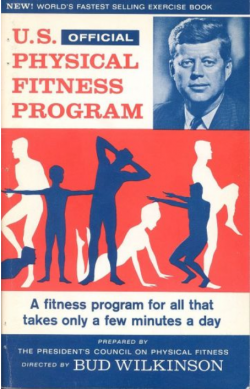The year was 1994. February 1994. On a bus from Montreal to Quebec City with a team. On a mission, and a purpose.
Similar to the bus rides from my hockey playing days, but this was different. We did have hockey sticks, but not with the intention of hitting the ice to compete.
The sticks were posts for placards. The placards were to be held on the steps of the National Assembly in Quebec City. Our team of physical education teachers were on a 3 hour journey to make our voices known. To be heard. We were protesting the latest round of Physical Education cutbacks. Proposed cutbacks that would cost me my job. More importantly, it was another nail in the coffin of student health and wellness.
Actually, it was more than a 3 hour journey, in fact it was more like a journey of a lifetime. Becoming a “gym teacher” or Physical Education specialist represented a lifelong goal of striving to impact others the way PE had impacted our lives. Physical Education specialists have varying personality characteristics, however what links us all is that PE affected us positively. It might have been that special teacher. Or perhaps the confidence gained through PE success. Or both. Or something else. But is was positive, and it was life changing. So much so, we wanted to make it our career.
University studies and a teaching degree. Job interviews and getting a teaching job. In my case, getting a full time job as a PE teacher was no easy task. It took me part time and temporary jobs for the better part of 5 years after graduation.
My 2nd full time job landed me at Dawson College in Montreal. Part of a staff of over 30 PE specialists. We provided a PE program for the ages. Subjects like Stress Management and Outdoor Education. Aquatics and Learning to Skate. We had many students on the ice, in the outdoors and/or in the water for the very first time at an age when most would not consider these activities.
After 2 years at Dawson, the word came down. The following August, the PE requirements would be cut by 50% for the students. Budget cuts. 50% of the staff was out.
This was not good news for my work. But the real issue was the impact on the students. Those we had had smiling and moving and learning had their opportunities cut back by 50%.
I had just gone through a similar exercise in my first full time job, teaching PE to students K-6. After 2 years, the position was reduced from full time to ½ time.
These moves seemed counter intuitive. Daily PE helped with physical and mental health and academic achievement. We studied that in University. Was everyone not aware? This would be like stopping the medicine that was needed to cure an illness. In fact, it was exactly that.
So we stood outside protesting in the freezing cold in Quebec City to an audience that had made up their mind. They were not listening. I remember thinking that this felt like trying to date someone who had no interest. Futile. And I was correct.
The impact is still being felt today.
Personally, I was fine. I left school teaching after that year and pursued my passion in health promotion another way.
Fast forward to 2020, and there are very few PE specialists left. Most universities that offered PE specialist degrees stopped doing so because the jobs dried up.
And the impact on the kids without quality daily PE has not been horrific.
Participaction, a Canadian organization that promotes active living issued their 2020 Report Card on Physical Activity for Children and Youth and gives a grade of D+ for overall physical activity and sedentary behaviour.
Less than 1 in 5 children (5-11 year-olds) and youth (12-17 year-olds) in Canada are meeting national movement behaviour guidelines for physical activity, sedentary behaviours and sleep.(2014-15 CHMS,Statistics Canada).
Recently during the pandemic, the conducted as study on physical activity and our youth:
- Only 4.8% of children (ages 5-11) and 0.8% of youth (ages 12-17) were meeting 24-hour movement behaviour guidelines during COVID-19 restrictions, compared to the 15% (5-17 years) prior to the pandemic.
- 62% of kids and teens were being less physically active outdoors.
- 79% of kids and teens were spending more leisure time on screens.
Supporting studies:
https://www.participaction.com/en-ca/resources/children-and-youth-report-card
Despite these worrying trends, Physical Education continues to be treated as expendable, experts say.
It was not always this way.
Physical Education was a staple branch of the educational curriculum dating back to the 1800’s as governments looked to prepare young people for military service. As far back as 1909, Physical Education started to become a standard in the North American curriculum to varying degrees. Over time, it moved away from militaristic drills and calisthenics to more of a play based focus.
By the 1930’s this play based focus took over and in the 1940’s university degree programs in Physical Education were launched
The momentum grew from there with physical fitness and health promotion becoming a bigger and bigger part of the school focus across North America.
In the United States, John F Kennedy established the physical fitness program in 1961 to delivery on the priority of strong body and strong mind.

Here is the JFK message on physical fitness of the time:
Here is great 5 minute clip on JFK sample school PE program in the early 60’s
It was in the 1980’s that Physical Education started to get on the radar of budget cuts, and marked a decline that we are still feeling today.
It is perhaps not a coincidence, that the physical and mental health of our society has never been worse than it is currently, with it being especially harsh impact on our school age children.
So how do we climb back?
It would start at the grass roots level with the parents. As parents we have the biggest role to play in the role modeling and promoting of healthy habits.
Without role modeling of parents around activity, our youth are in for a tough go. Reducing screen time, coming up with scheduled family activity time is a great first step to getting back on track.
Parental groups must also advocate for PE to come back into the schools. At least push them to implement what is in the curriculum. If the schools are not going to budge, then opportunities for outside of school activities are essential.
Advocating community driven play times and areas as well as schools need to bring pact, as John F Kennedy said “ Do not have the majority of our population sitting on the sidelines”.
That is what we have now. The fear he had in the 1960’s is the norm in 2020 in most of the western world.
Yes, schools have a role to play. But it won’t happen with parent apathy.
Perhaps COVID and the issue of re-opening schools will push parents to speak up more on curriculum and what is important for them.
Understanding the PE curriculum would be the first step and making sure that your local school board is implementing the requirements would be essential.
Schools in some countries have reversed the trend to cutbacks and inactivity.
In 2010, Finland embarked on a national action plan to increase physical activity in schools. The Finnish Schools on the Move program – a suite of measures, from peppering 15-minute breaks throughout the school day to conscripting older kids to lead games and activities at recess – has been adopted by 90 per cent of Finnish municipalities and is having a gradual but positive impact on activity levels. The initiative was the government’s response to reports that only half of Finnish youth were meeting the World Health Organization’s guideline of one hour of moderate to vigorous activity a day. In Canada, the figure is a dismal nine per cent.
More on the Finish program here: https://liikkuvakoulu.fi/english
Recreational opportunities accessible to all need to come back to the communities.
Communities can incentivize organizations to make healthy living opportunities available to more than just those who can afford it.
#1. Gyms could be given tax breaks in return for offering basic fitness classes. After 25 years working with gym owners, I don’t know many who would pass up having an impact in the community by serving our next generations, especially if their time was valued with some financial incentives.
#2. Performance centers (every community has a few places where athletes train) could be provided the same for offering movement ed courses to the community.
#3. Each community center with a pool could offer free learn to swim in return for operational incentives. Same applies to martial arts classes and self-defense and stress management courses.
#4. Arenas could be incentivized to offer learn to skate classes for individuals of all ages. Less and less Canadians are skating. If not in an elite sport, then chances are they are not learning to skate.
#5. School gyms could be opened and funded with tax incentives to the school or the qualified PE teacher. The PE teachers should not have to provide their expertise for free. IF budgets are tight, give them a tax break.
#6. Most communities have companies who would be open to incentives in return for contributions to program funding.
#7. Companies themselves could be incentivized for employee wellness. (Some of the biggest employers in our communities are municipalities). A tax break in return for participation or volunteering opens the door to that role modeling mentioned earlier.
Community leaders need to adopt a framework that will cut through the bureaucracy and effect positive change. There are success templates to support just such an execution plan.
The best execution plan I have seen is Matt Young’s program:
Documented here in The Physical Movement July 26, 2020: https://thephysicalmovement.substack.com/p/fixing-the-broken-youth-sports-system

If community leaders, who rely on votes to be in this position, does not feel the pressure to demand this, it will not happen.
If the community leaders do not know WHAT to do, this will not happen.
Another component to getting our health back is increasing health promotion and awareness. One of the mistakes that PE teachers made in my day is assuming the good work within the PE setting would be enough to make it sustainable.
Not true.
Whatever the initiative to get people moving needs to be promoted and held up as the new standard. Social media have provided the tools to get the message out quickly.
Parents, educators, community leaders the time is now.
It starts with good role modeling and can evolve to change the status quo.
After 35 years of decline, let’s step up and forward to make the difference so we can all benefit.
No amount of protesting with posters on hockey sticks will work.
Getting the family out for a walk will work.
Opening up our gymnasiums and pools will work.
Relying on our local health and wellness experts will work if we help them help our communities.
Getting 15 minute hourly activity breaks during the school day will work.
We need more but these are strong steps forward.
There is a lot at stake.

